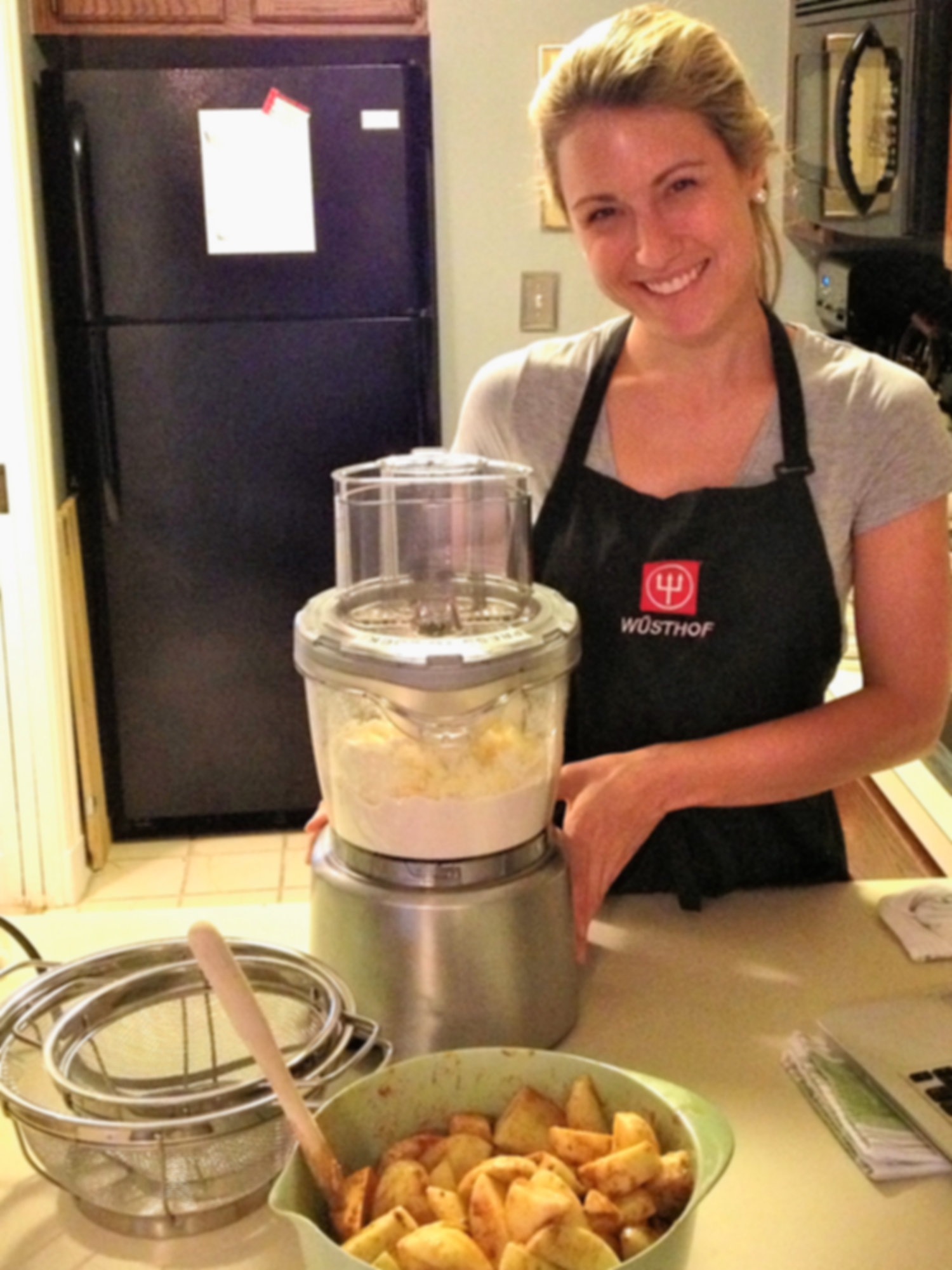The first apple pie I made completely from scratch was a disaster (and that's a nice synopsis). It took FOREVER to make and what did I end up with?-- A pie that was soggy, concave, burnt exterior, under-baked interior and a taste that was assaulted with citrus. I was upset with the results to say the least (partially because I had wanted a good piece of pie). In addition to being upset, the whole pie making process left me feeling very frustrated (I followed the instructions to the letter, how could this have possibly failed!?!). Below is a picture of the before and after of my first pie making experience. I am slightly mortified showing you this, but you need to know that a) the story is true and b) why I was so inspired to write this post.
One thing to know about me is that when I fail at something, I don't cry or throw myself a pity party. Instead, I take a more productive approach- Research, Rinse and Repeat! Meaning, I study what I did, figure out what went wrong and then try it again until I achieve success. Yes, my first pie was an epic fail, but I learned a lot from failing. Below I have compiled a list of tips and resources that have helped me to figure out (and eventually conquer) the art of apple pie making.
Tips (that I wish I had known for my first pie)
- If Using Raw Apples~Drain Them!- Once you peel, core and cut your apples, toss the slices in the juice of 1 fresh squeezed lemon and 1/4c of sugar and then place slices in a sieve/colander to drain for an hour and a half. This Alton Brown Video was eye opening as to why this is technique is so important. Draining your apples prior to baking will help to minimize the wateriness in your pie.
- Pack Those Apples Tightly- As I mentioned, my first pie was concave (i.e. It looked like a deflated balloon). The reason why this happened was because I haphazardly dumped my apple pie filling into the pie dish and then proceeded to bake. What I didn't consider was the fact that when apples cook, they shrink in size. If you don't tightly pack your apple slices into your pie in a somewhat orderly fashion, they will create large air pockets in your pie as they cook down. Failing to tightly pack your apples will not only cut down on your ratio of apples to crust per bite, but it can also compromise the integrity of your crust because it no longer has the support of the apples to help keep the pie dome shape.
- 2 Baking Temperatures and Covering Your Crust- Bake the pie at 400 degrees fahrenheit for the first 35 minutes and then turn the heat down to 375 degrees and place a piece of aluminum foil lightly on top of the pie for the remainder of the baking time. This will keep the exterior crust from burning, while providing the interior crust and pie contents ample time to cook throughout.
- Pie Vents- You may already know that before your pie goes into the oven you need to take a sharp paring knife and cut a few slits into the top crust. This is done to provide your pie with vents for the steam to escape. The interesting part about pie vents that I did not know before, is that pie vents can be very helpful for checking the doneness of your pie. When your pie is done baking, you should be able to stick a knife through every vent on your pie and down through all of the apple layers without any resistance. If you experience any resistance, then your pie isn't done baking. In addition, pie juices will start to escape through the vents when the pie is done baking (not always, but often).
- Egg Wash and Granulated Sugar- Before your pie goes in the oven, brush all exposed crust with an egg wash and then lightly sprinkle granulated sugar over the top of the egg washed crust. This will help you to achieve that golden brown crust with the added touch of sweet crunch from the slightly caramelized granulated sugar.
Flaky Golden Crust and a Perfectly Cooked Apple Filling. Served ala mode of course and garnished with a Cinnamon Sugared Simple & Crisp Apple Crisp.
As you can see from the picture I have shared directly above, even pie stories can have happy endings. Although it was rough, I am really appreciative of that first pie experience.




